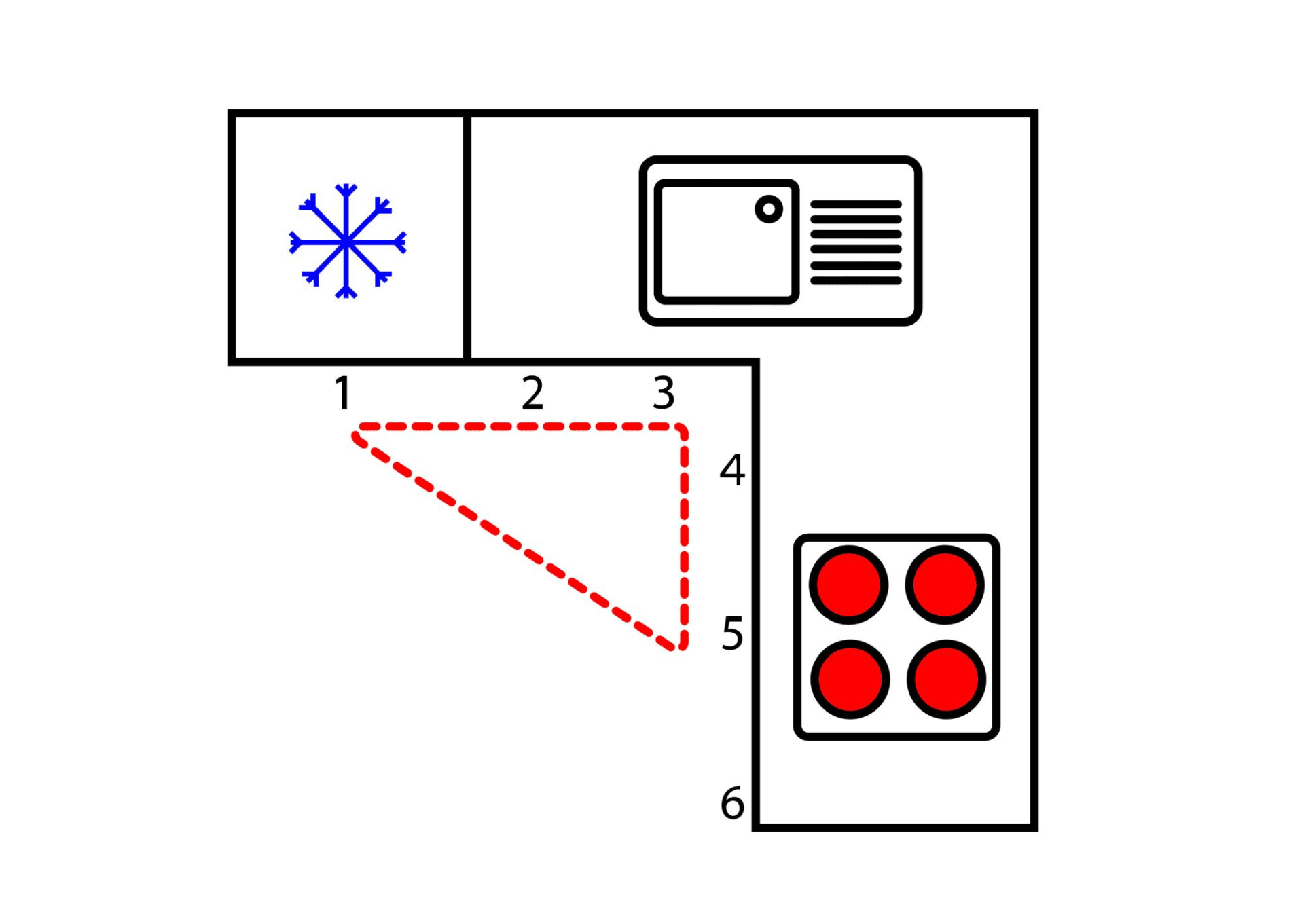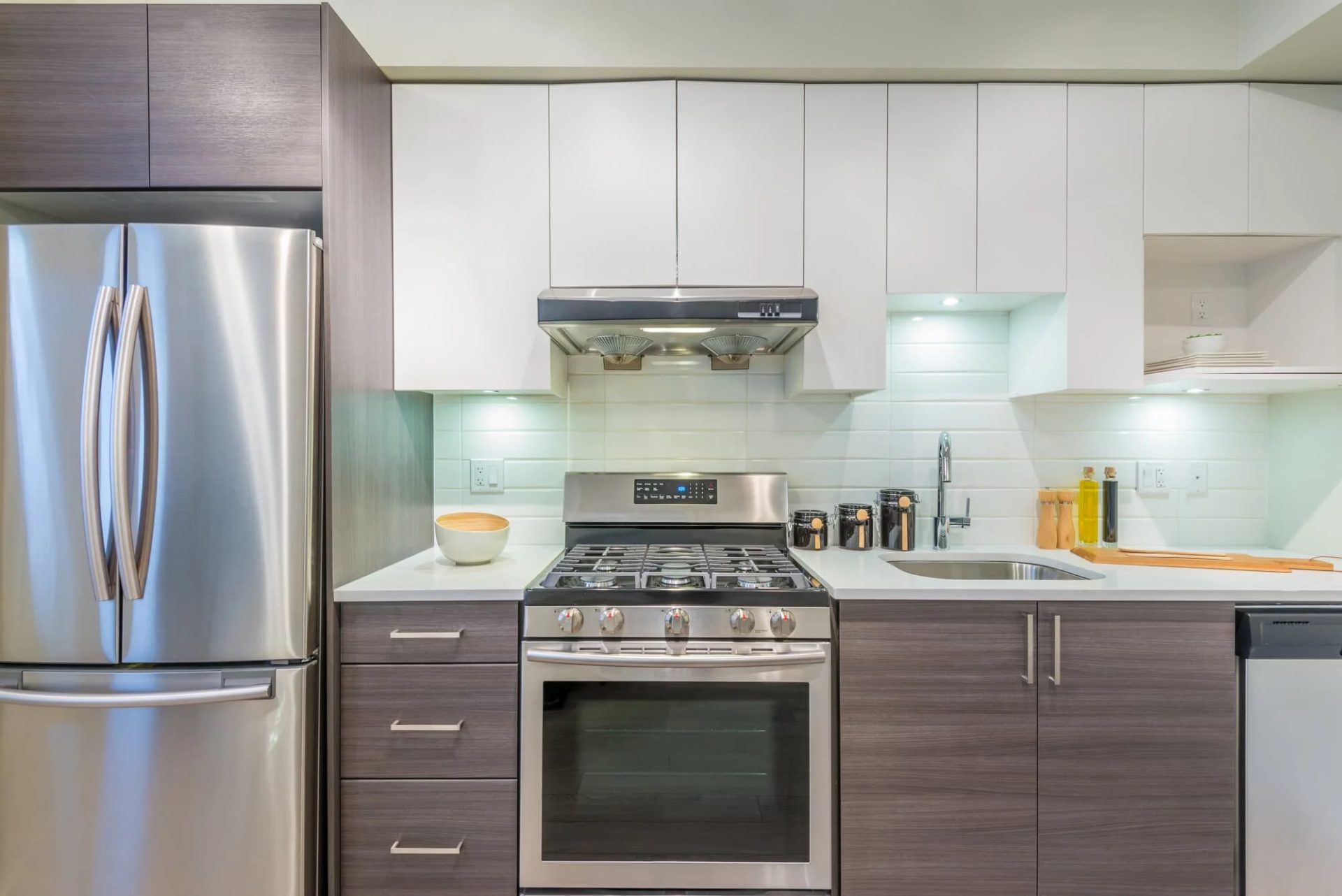Arguably one of the most important spaces in your home, a kitchen needs to be designed with careful consideration. It’s a busy space where you and your family will spend a lot of time, so you want it to be highly functional.
Table of contents
While the aesthetics of your kitchen should also be considered, the layout plays a more important role in determining how you can utilize this area with ease and convenience. If you have a large kitchen, you get a lot of freedom to arrange and install your appliances, but your options become much more limited in a small kitchen and you will have to make sure some appliances are not kept too close to one another — such as your stove and your fridge.
Is it safe to place your stove next to the fridge? Let’s find out.
Why You Shouldn’t Keep Your Stove Next to the Fridge
Keeping your fridge next to the stove is not dangerous and will not pose immediate risks. However, it is still a better idea to keep the two appliances apart. Your fridge and your stove serve opposite functions. While the fridge provides a cold environment to store food, the stove heats up food for cooking.
So, if you are considering keeping your fridge next to your store, here are a few factors you may want to consider first.
1. Poor Cooling
The heat from the stove can destabilize the refrigerator’s thermostat. This will lead to the temperature inside the fridge compartments becoming warmer. It can also cause moisture to develop inside as well as outside the fridge walls.
2. Reduced Efficiency
Your fridge has a compressor that circulates refrigerant gas throughout the refrigerator via copper tubes within a compressor. As this gas evaporates and condenses, it cools the refrigerator compartments. The fridge’s thermostat maintains the temperature inside the fridge by signaling the compressor to stop or start working.
The heat from the stove will interfere with the thermostat and cause it to signal the compressor to switch on and off quickly and unnecessarily. This can lead to an increase in energy bills.
3. Reduces the Lifespan of the Fridge
If the stove is placed too close to the fridge, the compressor has to work harder in response to the temperature fluctuations recorded by the thermostat. This results in increased wear and tear of the compressor that can trigger bigger issues like damaging or completely breaking the refrigerator.
4. Makes the Space Look More Crowded
You need more space around the stove to move around easily and comfortably when you cook. With a refrigerator next to it, your movement becomes limited. It also greatly reduces the workspace and crowds the area. And if the refrigerator door opens toward the stove, it can cause further inconvenience such as not being able to fit large pots and pans with big handles.
5. Risk of Damage to the Fridge’s Exterior
The exterior of the refrigerator facing the stove will get smeared and damaged with oil and grease splashing onto the refrigerator. The fridge wall can also get dirty and the continuous moisture presence can lead to other damages like paint chipping.
6. Difficult to Clean Hard-to-reach Areas
Splatters from the stove can drip down the fridge and settle in tight places between the two appliances. If the fridge does not have wheels, cleaning can become a huge hassle.
The Triangle Rule
When designing a kitchen, it’s a good idea to consider the working triangle or the kitchen triangle.

Also called the “golden triangle,” this concept for a kitchen layout involves the kitchen’s three main work areas — refrigerator, stove, and sink. The layout requires these three work areas to be arranged to look like the three vertices of a triangle.
There should be enough space between the three and they must also be away from other heat sources including other appliances and windows. There should also be enough ventilation to avoid overheating.
What to Do if You Have a Small Kitchen
While the kitchen triangle layout continues to be recommended by most designers, it may not be an ideal layout if you have a small kitchen.
However, there are other tips you can apply that will help prevent damage or at least minimize them to keep both your stove and fridge safe.
1. Install a Separating Material
Apply heat-insulating material to the refrigerator side that faces the stove. These materials are easy to apply and require only tape or glue. It is the simplest, quickest, and most affordable option that will serve as a wall between the two appliances.
Apart from protecting the refrigerator from heat, it will also protect the refrigerator wall from getting dirty and damaged.
2. Install a Kitchen Hood
A hood acts as an exhaust by pulling the heat, smoke, and combustion produced by the stove and aiding in air circulation. It ensures that less heat radiates toward the fridge while the additional air circulation helps to cool the upper part of the refrigerator.
3. Add a Wall or Screen Between the Two Appliances

A physical barrier like a screen will absorb or reflect the heat from the stove. It will further protect the refrigerator from heat, oil, and splatters.
4. Declutter the Kitchen and Use Smaller Appliances
Since your kitchen cannot get any bigger, it is better to make the best of what you have. Try to make small changes that will maximize the space you have and improve the overall airflow. For example, you can declutter the kitchen by removing items like tables and chairs that can be placed in the other parts of the home.
You can also consider downsizing your appliances, such as using a mini stove or a mini fridge to get more space.
5. Move the Refrigerator to Another Area
If your kitchen is connected to or very close to the living area or the bedroom, you can move your refrigerator there. It will still be easily accessible while also allowing more space in the kitchen.
Conclusion
While not ideal, you can still place your stove next to the fridge. The heat from the stove will make the fridge work extra hard and can damage it in the long run. And if you have a small home, this problem is unavoidable. Thankfully, there are many useful techniques and methods you can use to limit this damage. So, make the most of your kitchen space and apply protective materials or dividers to keep this pair of appliances safe!







